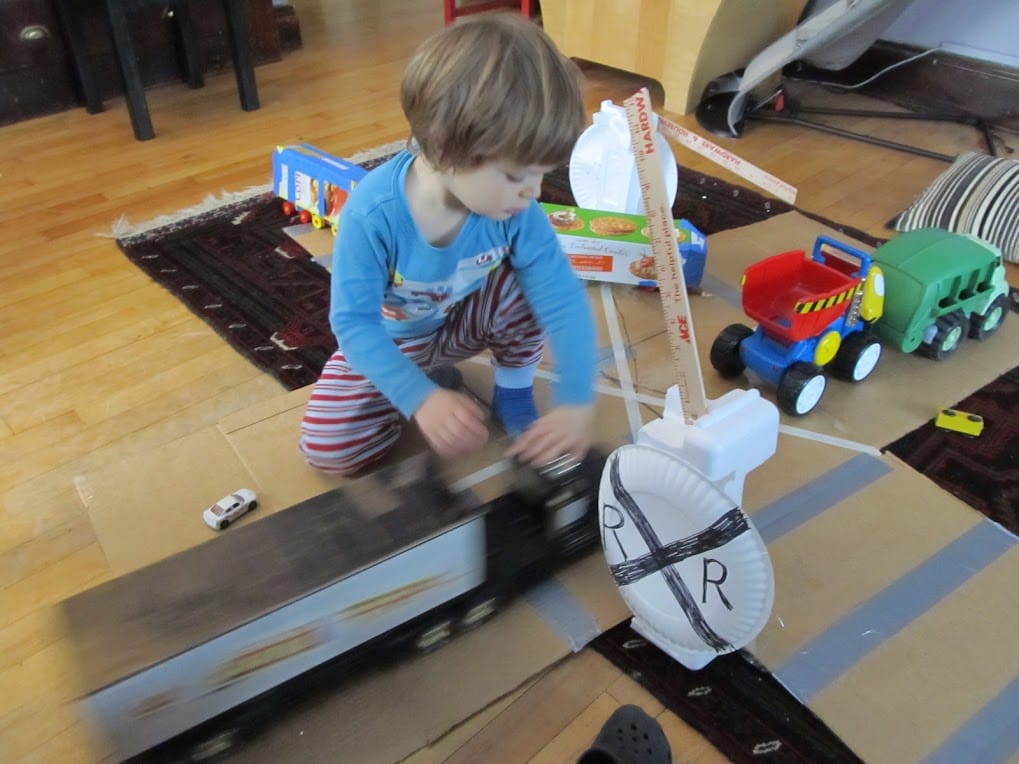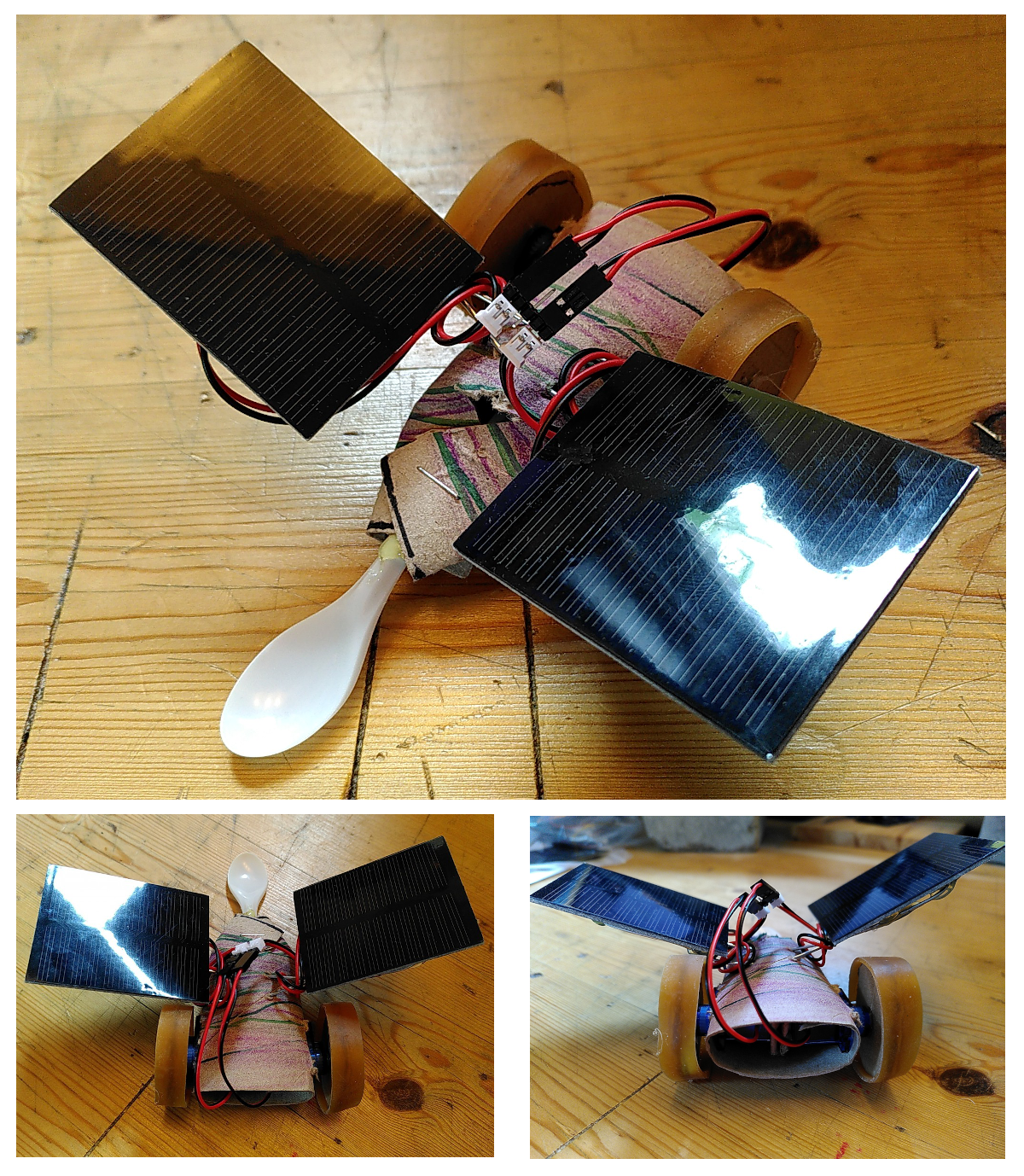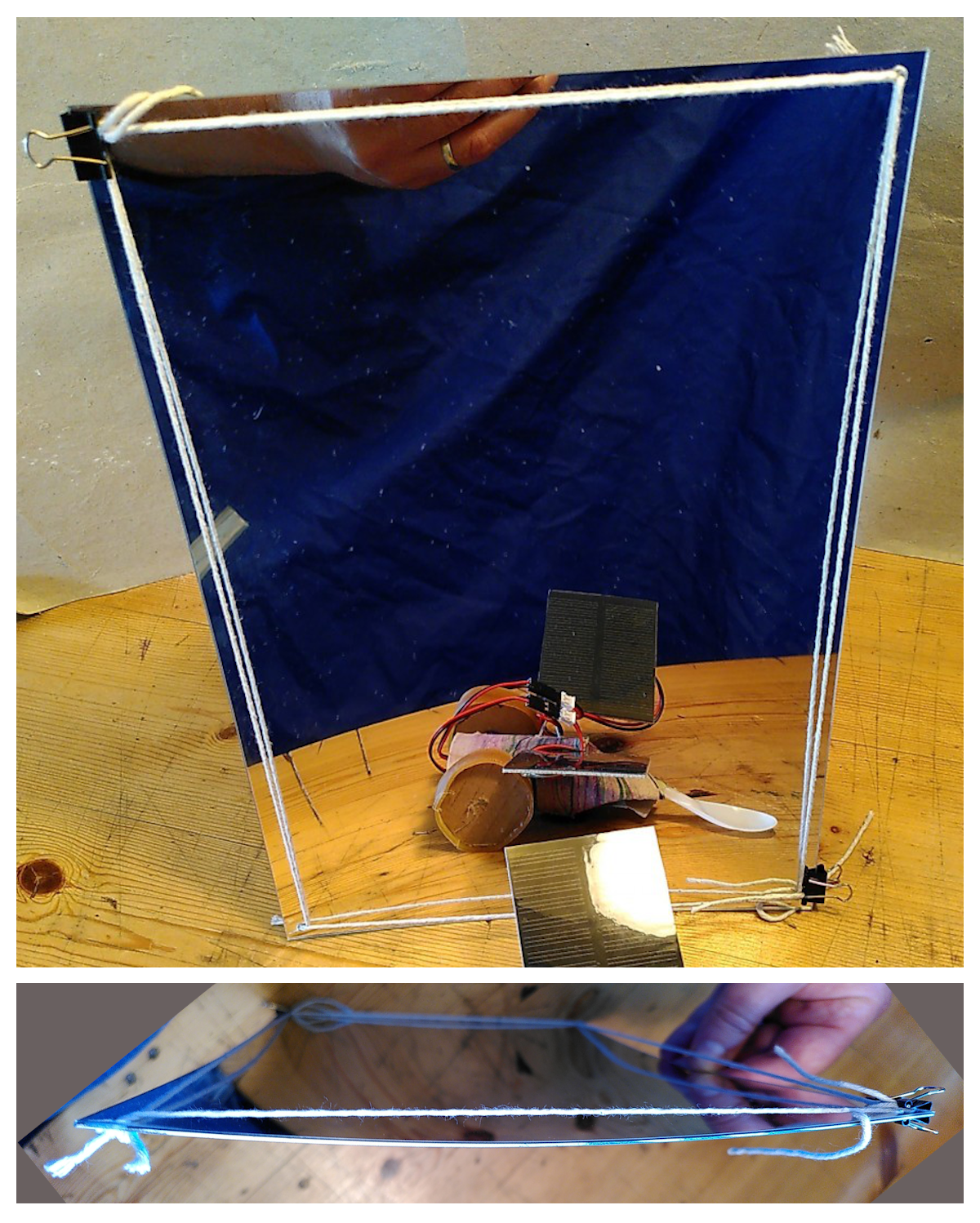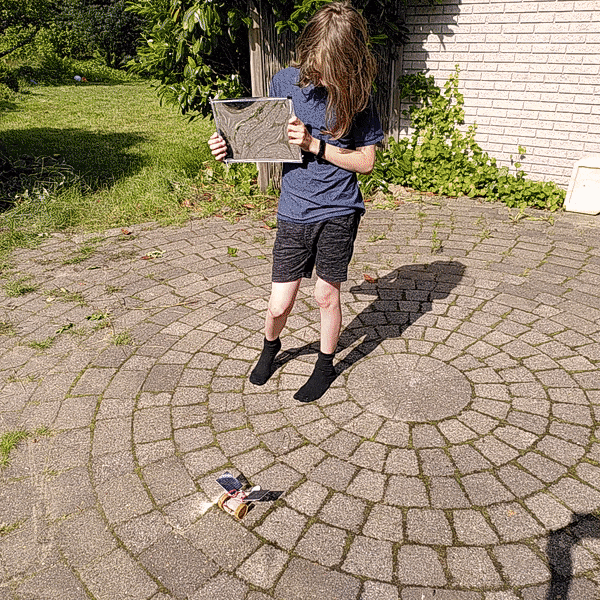On the Role of Toys in Learning: Big-Old Long-Old and the Solar Bug

This is part 2 of the Playing with the Sun essay from 2022 that kicked off the Project, and focuses on the role of toys in learning through play experiences. Part 1 describes the thinking behind engaging children in creative learning experiences involving sustainable energy.
A toy is a tool for exploring and understanding relationships through play.
My 4 year old son named the toy semi-truck we found at a yard sale Big-Old Long-Old. He made a rumbling sound deep in his throat whenever it drove. It carried loads of sticks and sand in its trailer, dropping them off in various spots in our yard. It wasn't quick like his racecars, but its movements were profound, heavy with meaning. He made it pause at intersections, and made beeping sounds whenever it backed up.
Many of the relationships trucks have – from the cargo they carry, to the way they move through the streets – my son explored and understood by playing with his toy truck. It was for him "an object to think with," as Seymour Papert described. But the thinking was primarily about how the truck fit into the existing order of things in his world, an order that is very much dependent on fossil fuels.
What sort of toys can we propose as a way for children to begin to explore and understand a different relationship to energy?
To begin with, these alternative toys should enable playing with the generation of power from the immediate environment. Generation and storage of power are difficult to perceive, because they don't create a noticeable action or output like the expenditure of power does. A child can't see the energy they put into a battery until they use it to do some action, like drive a motor or light an LED. This distance between energy cultivation and energy expression makes the relationship abstract and difficult to grasp intuitively. So part of the research into developing toys to explore different relationships to energy will require some investigation into how to make the presence or absence of stored energy tangible.
Whatever process of harvesting energy is used, it will need to enable the child to experiment with, concretely, the toy's relationship to the source of its power. A small solar panel driving a gear motor in full sunlight is an opportunity for the child to change the orientation of the panel, and then to notice the resulting change in the sound and the speed of the motor. In this way, holding the panel perpendicular to the sun's rays to get the most power is learned as an experience first, which lays the intuitive foundation for becoming a concept later.
The Solar Bug and the mirror
The Solar Bug is an example of a very simple toy that emerged from the set of goals and design constraints described in the first Playing with the Sun essay. It invites children to explore the relationship between the orientation of the sun's rays and the generation of solar energy. It has no energy storage, and its only electrical components are two solar panels and two gear motors. The left panel is connected to the right side motor. When sunlight is reflected from the mirror onto it, it drives the right wheel forward, turning the bug to the left. The same goes for the right panel, respectively.

The design of this toy is such that the energy generated by the solar panels in full sun without additional reflection from the mirrors should be inadequate or barely adequate to drive the motors. The child is given an A4 size piece of plastic mirror with holes drilled in the corners, which has been made to hold a slight parabolic curve by adjustable tensioning strings held in place with binder clips. The mirror is adjustable in the short-term by bending it with their hands, and in the long term by adjusting the tension of the strings held by the clamps. At the start it should have about 8mm deflection along both axes as measured by the distance between the mirror and the center of the string, giving it a focal length of about 1 meter. The bright rectangle this reflection creates should enable the child to shine additional sunlight on one or both panels at the same time, which causes them to drive the motors.

The goal of the facilitator is to invite the child to build their own unique Solar Bug and use it to explore the relationship between the sun, the mirror in their hand, and the solar panel, as immediately manifested in the movement of the bug.

There is the potential for the child to develop their understanding of the relationship between the rays of the sun, her mirror, and the solar panel in a similar way that the child with a toy sailboat may begin to understand the relationship of the wind to her sail. Orienting the mirror towards the sun will create a bright spot on the pavement that can be played with. The children may notice that standing between the Solar Bug and the sun with the mirror doesn't create any usable reflections, and perhaps wonder why. The mirror is only effective for driving the Solar Bug within a limited range of angles between the the sun and the solar panels.
An important aspect of this activity is that it is very much subject to the weather. A passing cloud will have a noticeable effect, and broad cloud cover puts an end to the play. This, as Kris De Decker argues in his article about making Low Tech Mgazine's website solar powered, is itself an important idea to explore. When the solar panel that charges the battery driving the computer serving De Decker's website doesn't get enough sun, the battery runs out and the website goes offline. Whenever the wind didn't blow on Dutch windmills in the 18th century, the millers stopped the work of milling, and did something else. De Decker argues that a sustainable relationship to energy will require a similar acceptance of inconsistencies in the supply, because perfect consistency is much more costly than accepting some downtime and variation.
It's not an accident that the Solar Bug utilizes the metaphor of an animal and not a machine. An insect has to harvest energy throughout its life. When it has an excess it can be quick, and when energy is scarce it will move slowly out of the necessity to conserve. De Decker argues that factories could be designed along similar lines: When there is available solar or wind energy, energy use can be high and production can move quickly. And when the wind doesn't blow and the sun doesn't shine, production must slow or stop. From the standpoint of how we relate to energy today, this may seem like a radical idea. But it is much closer to the way every other living thing on our planet that has stood the test of time behaves.
